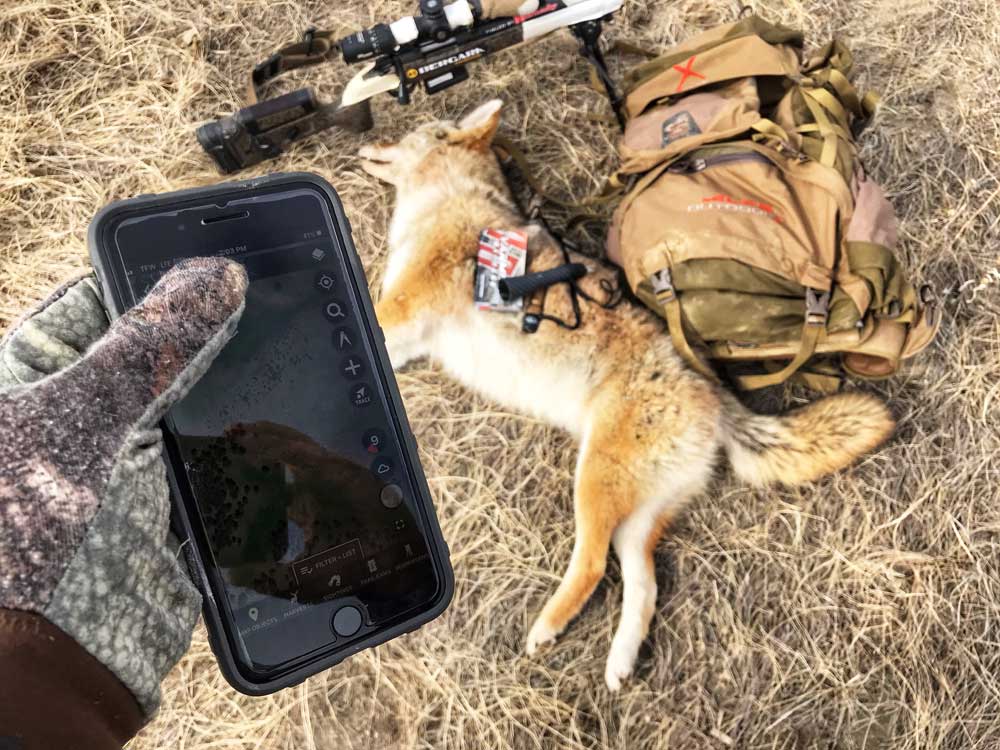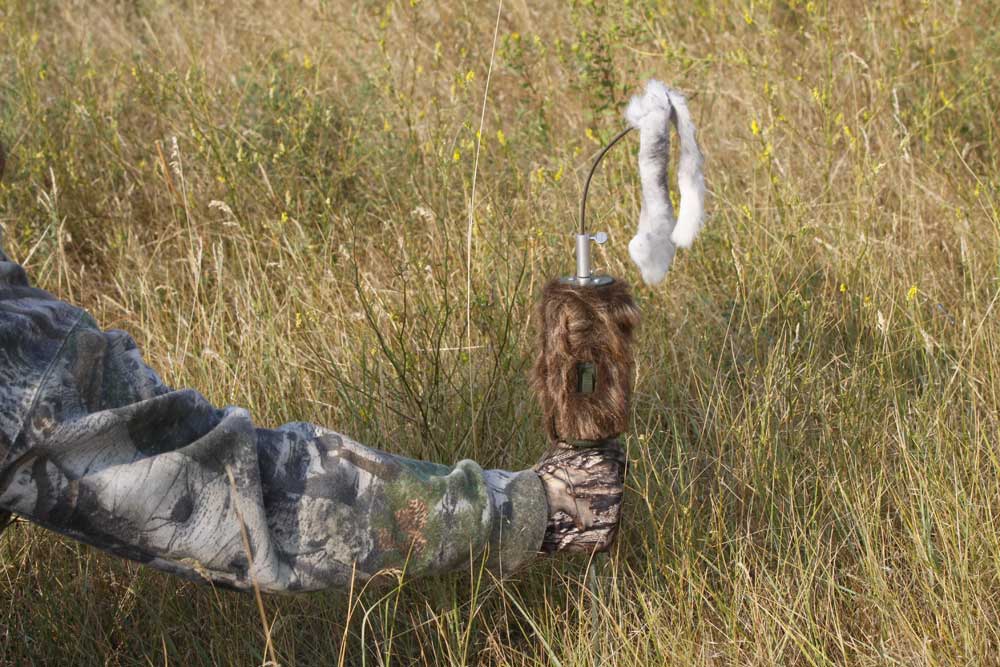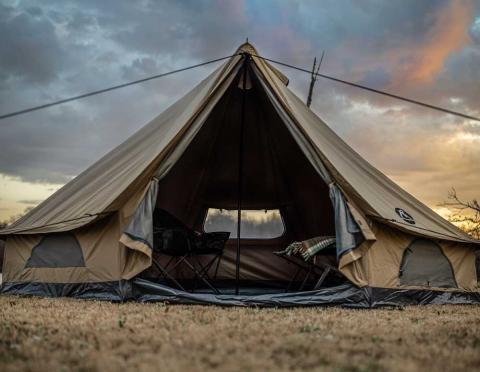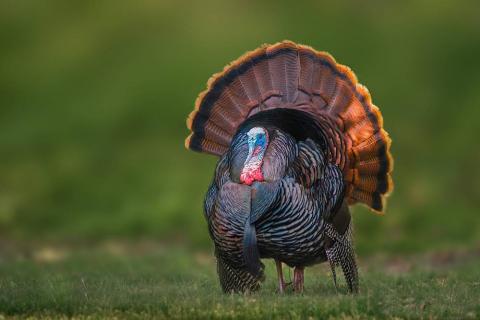Mark Kayser

Winter coyote hunting has its hardships and the reasons are simple. Coyotes have been shot at throughout several months of deer season. In areas of the Great Plains and the West, they have escaped the aerial accuracy by professionals that felled their brethren. Finally, many of the survivors have already had brushes with death after running to the sounds of a free meal. Squalls associated with the scent of humans leave a lasting memory of caution the next time they hear the dinner bell ringing.
After the young-of-the-year coyotes have hit the fur shed, it is time to tweak your coyote setups for the remaining fur veterans.
Own The Ground
When coyotes want, they can become the Invisible Man, with just a touch of Houdini, to magically disappear even after you spy them. To catch their approach and to be prepared for a fast getaway, own the ground.

Start by positioning yourself on the highest ground possible including ridges, hills and mountainsides. You may also have to be creative in gaining high ground in some locales. In open farm country, that high ground may be a slight rise of less than 10 feet. It may also include setting up in the hayloft at an abandoned farmstead, on top of junked machinery or even on deserted storage tanks from livestock water projects. Regardless, be creative and elevate yourself to look into every low area around to spot an incoming coyote early.
Next, stay out of sight as you approach your calling location. Use low spots, such as ditches, hollows or creek beds, for a hidden advance. Never silhouette yourself if possible. Instead of going over a hill, sidehill to give yourself a background to blend against. If you must silhouette, do it under the cover of darkness or move swiftly.
In every approach, it pays to eliminate your own scent with a quality scent elimination product like Scent Killer Gold. Give your boots an extra blast to ensure any coyote crossing your backtrail does not catch a whiff of you along the trail.

A good hunting app can help you locate elevated calling positions and cloaked avenues to access those sights. I use my HuntStand hunting app at home on my laptop and carry it into the field on my smartphone. Not only does it reveal topographical characteristics to benefit my calling, the HuntZone wind graphic, plus 72-hour forecast, help me plan for upcoming wind situations.
Simple Is Safe
Few sounds give coyotes an easy feeling more than the echo of a howl across the landscape. Coyotes, unlike many animals, are a vocal bunch. If you do not hear them singing loudly during shooting light, it is a good bet they are howling after business hours. Use coyote vocalizations at any point of the year to spur curiosity.
Think simple instead of trying to communicate with a series of sounds. The lone howl especially has merit if you feel coyotes have been pressured extensively. It is easy to imitate with a diaphragm call and is found on every electronic caller digital library. A variety of manufacturers retail howlers such as Rocky Mountain Calls Dirty Dog Caller. It helps you with proper lip positioning for solid howls.

Do not get carried away with calling too much as your goal is to not arouse suspicion, but incite curiosity. Howl with a long and comfortable starting conversation to get attention. Any coyote hearing the sound will either listen intently and then possibly seek the newcomer for a meet-and-greet or search out the intruder for a no trespassing warning. If you see a coyote coming your way, do not continue to howl. Most coyotes naturally continue in a slow, but stealthy arrival. Wait up to an hour as most coyotes rarely charge to a howl like they may to dying prey. Also, it is not uncommon for them to show up silently.
If you do get a coyote to answer you and you are not sure what to say back, play it safe. A sure bet is to mimic their response. A challenge howl fired right back can spark an advance in your direction. The only situation where you may want to avoid this is if a coyote begins a series of questioning barks. In that case shutting up is a good option or returning the dialect with a lone or challenge howl.

Create A Decoy Diversion
Finally, consider a decoy upwind of your setup location. This attraction creates a diversion for coyotes to investigate instead of making a huge downwind swing behind you. Place it 100 yards or more upwind. If you are using an electronic caller, set it next to the unit so they function as a partnership. Many electronic calling units include a decoy so use the accessory. Even if you utilize hand calls, an upwind decoy can stall a coyote into investigating the bobbing and dancing jig of a furry, faux prey.

While incorporating coyote vocalizations into your setup you can also place a coyote decoy out in front of you. Coyote decoys come in all shapes, but Montana Decoy’s Kojo coyote is lightweight and realistic enough to fool any coyote looking for the yapper in the neighborhood.
Scents also work great in combination with a decoy. Coyote scent can make any approaching coyote stop for an investigative whiff, thus giving you a standing shot. Plus, it works great to mask your foot odor that may have been left as you placed the decoy or caller upwind of your calling site. Hang a soaked wick of Wildlife Research Center’s Coyote Urine or Coyote Juice near your decoy to complete your trifecta of foolery including calls, a decoy and scent.

Coyotes in the heart of winter tend to be the survivors. Most did not survive by luck. They attended the school of hard knocks and that means you need to be as cagey as your target to add another pelt to your winter take.




























